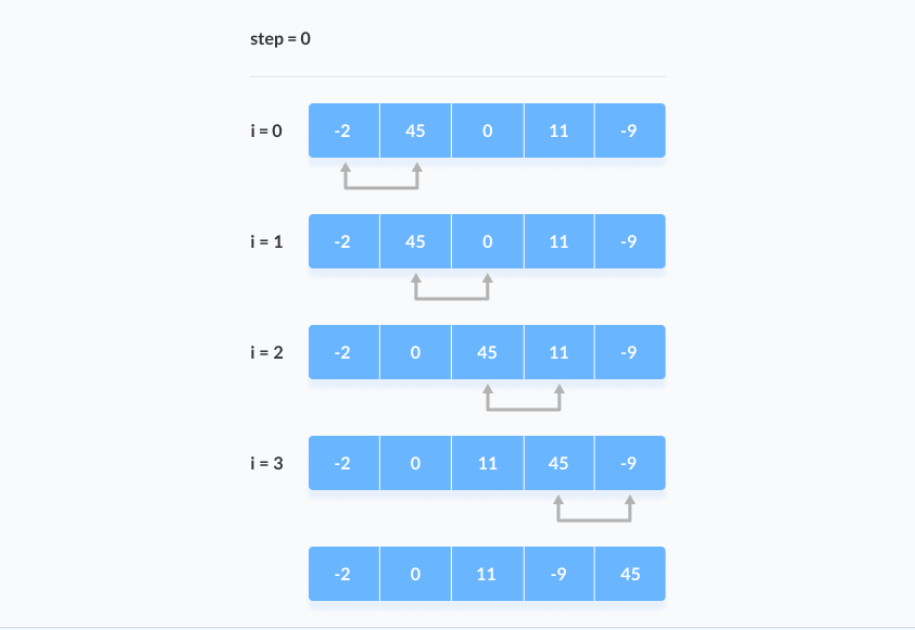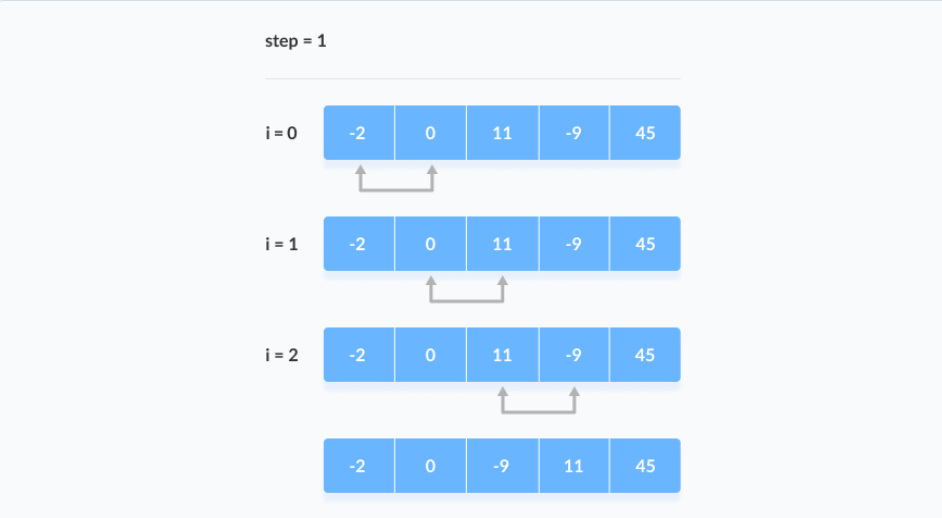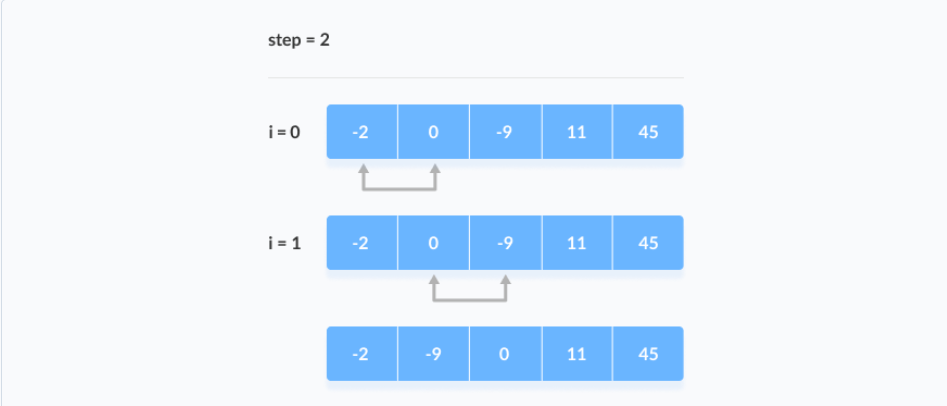Bubble sort is a sorting algorithm that compares two adjacent elements and swaps them until they are in the intended order.
Just like the movement of air bubbles in the water that rise up to the surface, each element of the array move to the end in each iteration. Therefore, it is called a bubble sort.
Working of Bubble Sort
Suppose we are trying to sort the elements in ascending order.
1. First Iteration (Compare and Swap)
- Starting from the first index, compare the first and the second elements.
- If the first element is greater than the second element, they are swapped.
- Now, compare the second and the third elements. Swap them if they are not in order.
- The above process goes on until the last element.
 Compare the Adjacent Elements
Compare the Adjacent Elements
2. Remaining Iteration
The same process goes on for the remaining iterations.
After each iteration, the largest element among the unsorted elements is placed at the end.

In each iteration, the comparison takes place up to the last unsorted element.

The array is sorted when all the unsorted elements are placed at their correct positions.

Bubble Sort Algorithm
bubbleSort(array)
for i <- 1 to indexOfLastUnsortedElement-1
if leftElement > rightElement
swap leftElement and rightElement
end bubbleSort
Bubble Sort Code in Java
// Bubble sort in Java
import java.util.Arrays;
class Main {
// perform the bubble sort
static void bubbleSort(int array[]) {
int size = array.length;
// loop to access each array element
for (int i = 0; i < size - 1; i++)
// loop to compare array elements
for (int j = 0; j < size - i - 1; j++)
// compare two adjacent elements
// change > to < to sort in descending order
if array[j] > array[j + 1]) {
// swapping occurs if elements
// are not in the intended order
int temp = array[j];
array[j] = array[j + 1];
array[j + 1] = temp;
}
}
public static void main(String args[]) {
int[] data = { -2, 45, 0, 11, -9 };
// call method using class name
Main.bubbleSort(data);
System.out.println("Sorted Array in Ascending Order:");
System.out.println(Arrays.toString(data));
}
}
Optimized Bubble Sort Algorithm
In the above algorithm, all the comparisons are made even if the array is already sorted.
This increases the execution time.
To solve this, we can introduce an extra variable swapped. The value of swapped is set true if there occurs swapping of elements. Otherwise, it is set false.
After an iteration, if there is no swapping, the value of swapped will be false. This means elements are already sorted and there is no need to perform further iterations.
This will reduce the execution time and helps to optimize the bubble sort.
Algorithm for optimized bubble sort is
bubbleSort(array)
swapped <- false
for i <- 1 to indexOfLastUnsortedElement-1
if leftElement > rightElement
swap leftElement and rightElement
swapped <- true
end bubbleSort
Optimized Bubble Sort in Java
// Optimized Bubble sort in Java import java.util.Arrays; class Main { // perform the bubble sort void bubbleSort(int array[]) { int size = array.length; // loop to access each array element for (int i = 0; i < (size-1); i++) { // check if swapping occurs boolean swapped = false; // loop to compare adjacent elements for (int j = 0; j < (size-i-1); j++) { // compare two array elements // change > to < to sort in descending order if (array[j] > array[j + 1]) { // swapping occurs if elements // are not in the intended order int temp = array[j]; array[j] = array[j + 1]; array[j + 1] = temp; swapped = true; } } // no swapping means the array is already sorted // so no need for further comparison if (!swapped) break; } } public static void main(String args[]) { int[] data = { -2, 45, 0, 11, -9 }; // call method using the class name Main.bubbleSort(data); System.out.println("Sorted Array in Ascending Order:"); System.out.println(Arrays.toString(data)); } }
